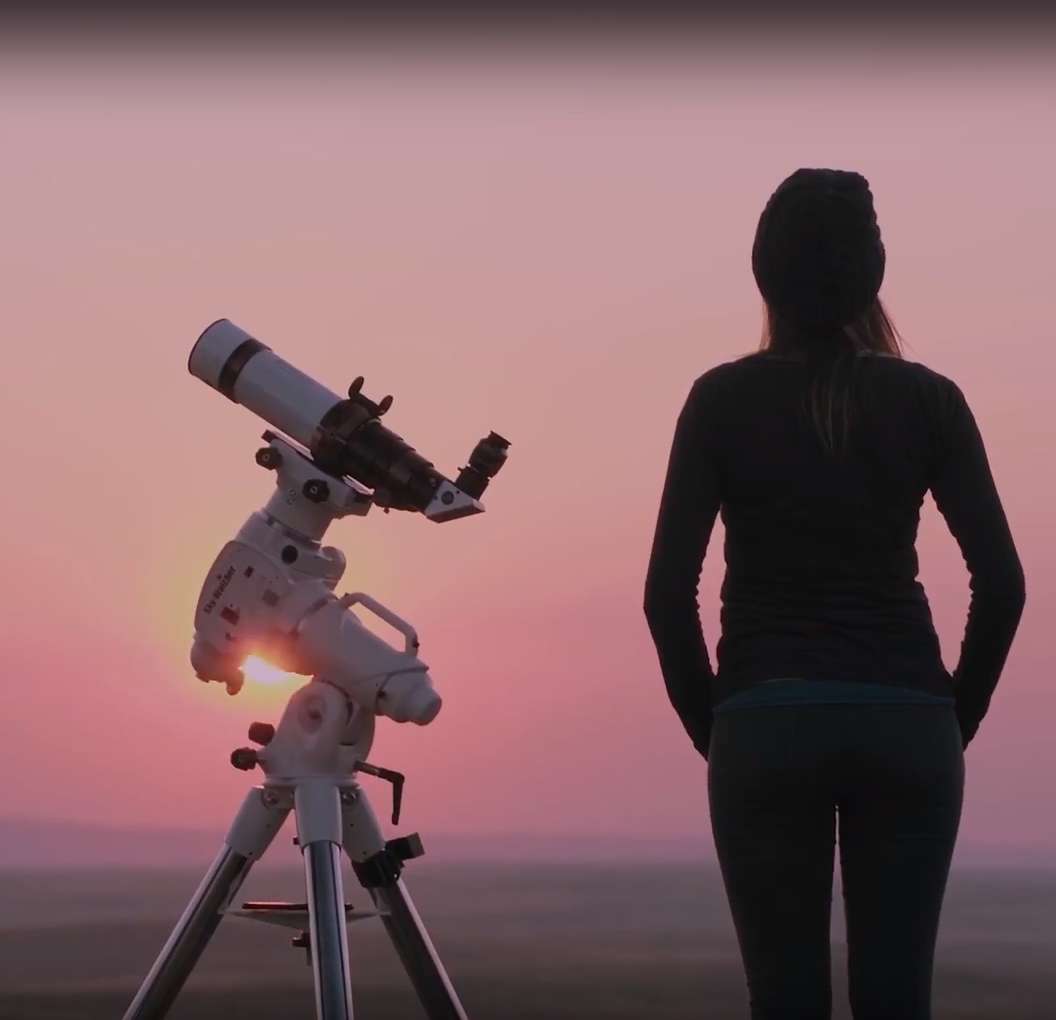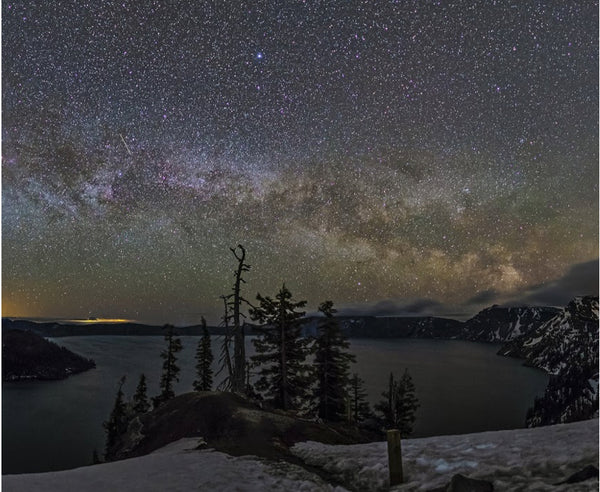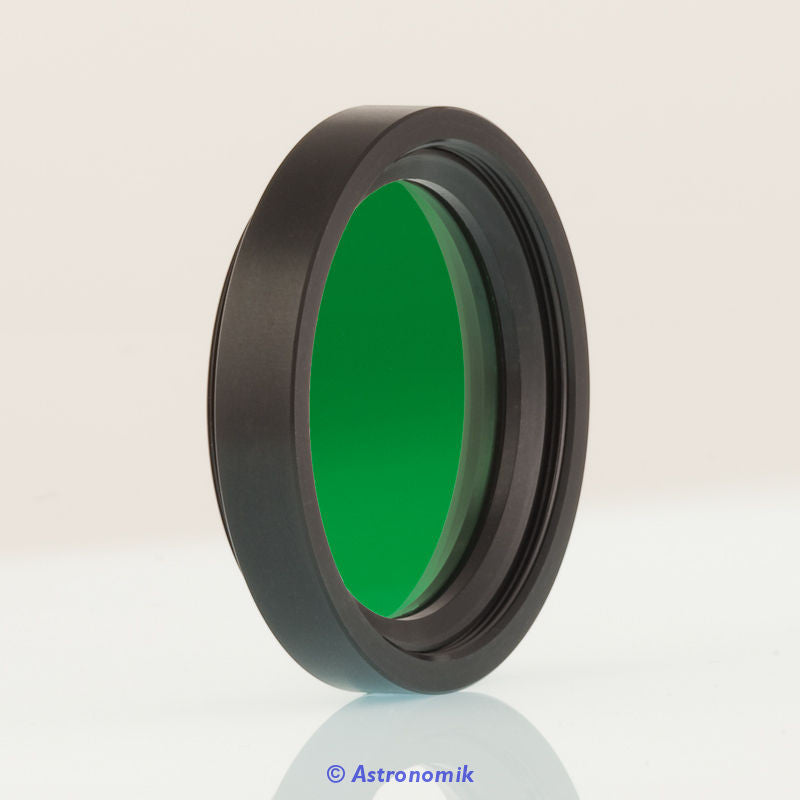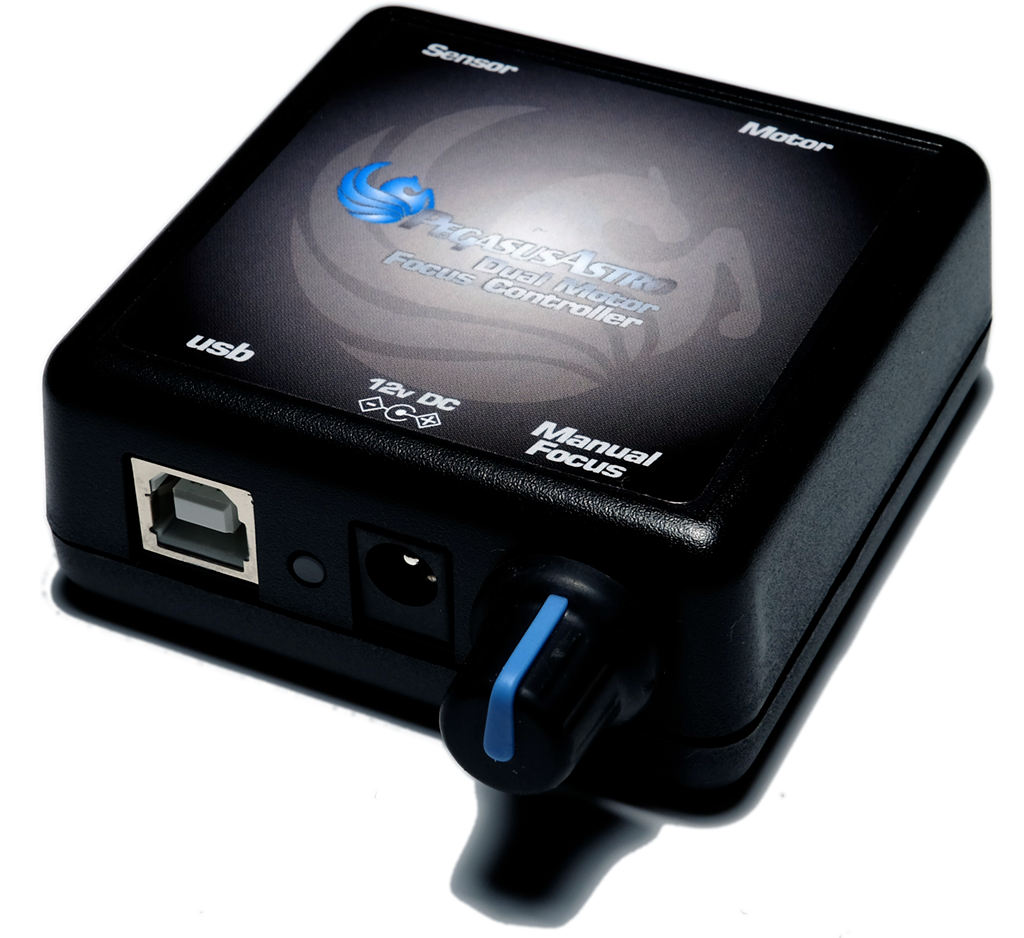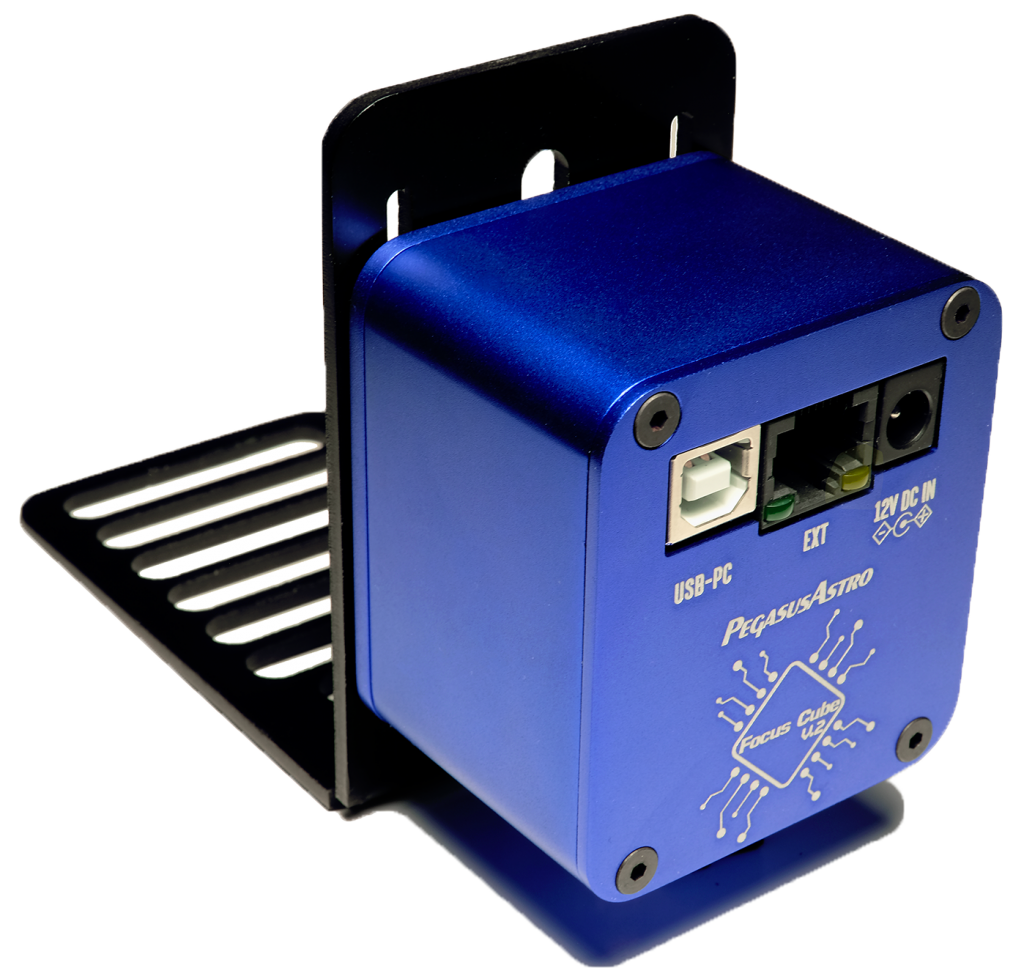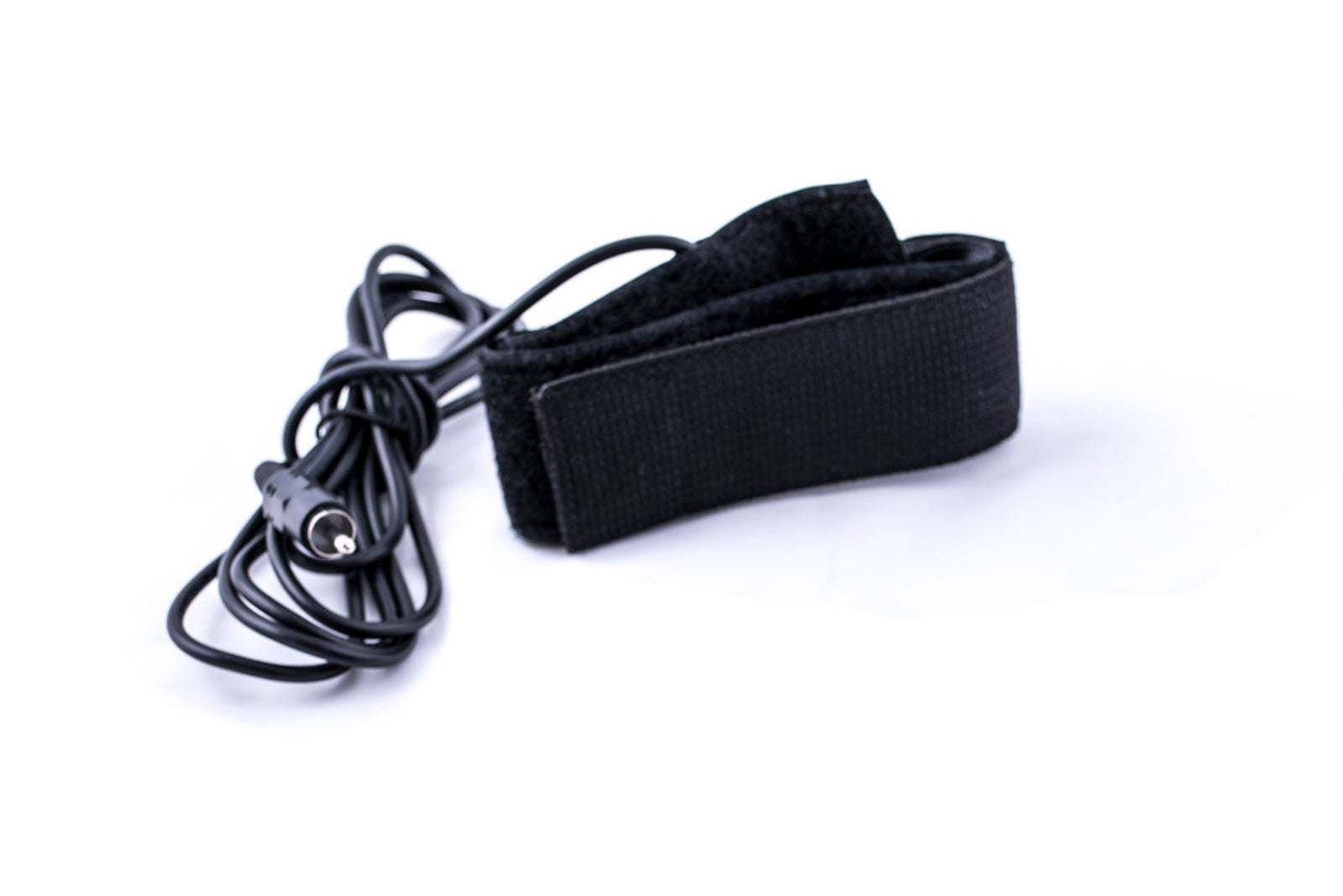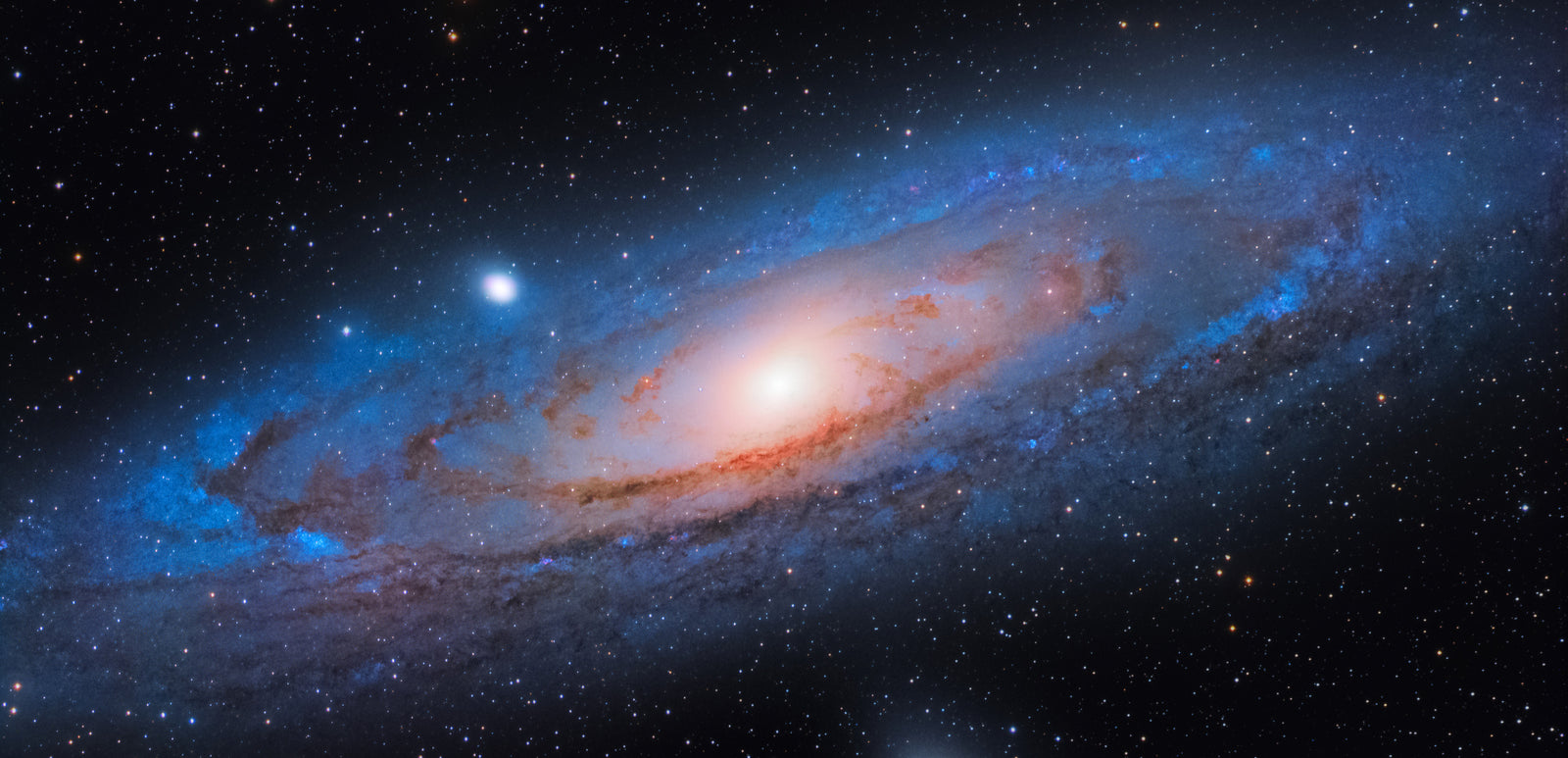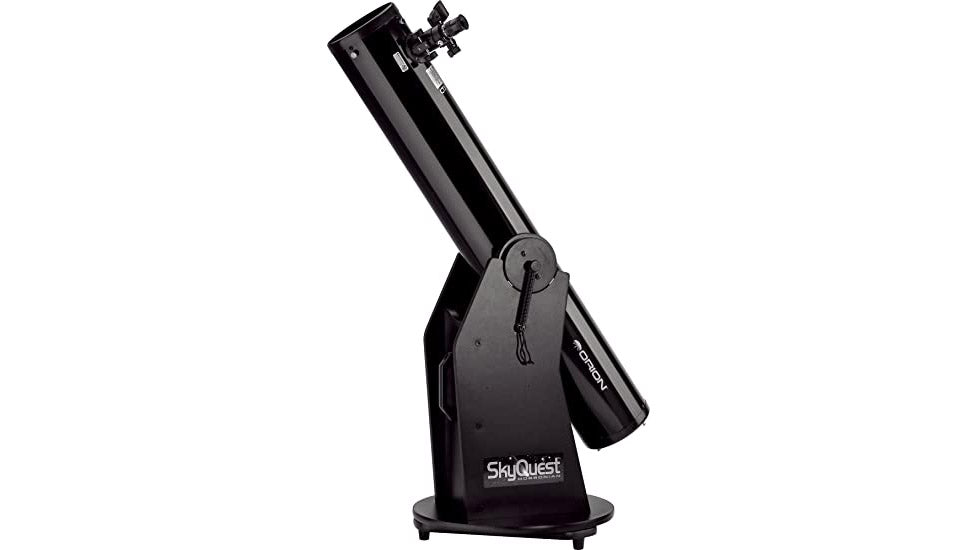Dobsonian telescopes come with a special base that rotates on two axes. They stand up quite tall, with the eyepiece towards the front of the scope making it easy to use. The mounting base is fluid for easy and smooth maneuverability.
You'll be able to view practically anything in space depending on the eyepieces used, and sky conditions that evening. Galaxies, nebulae, star clusters, planets, the moon, the lunar surface, and more will be readily viewable with a Dobsonian telescope.
A Dobsonian is a type of reflector telescope. As the name suggests, light is reflected within the telescope, flipping it upside down, just as your bathroom mirror flips the image side-to-side. Because of this, Dobsonian telescopes are not recommended for terrestrial viewing. Every Dobsonian includes a spotting scope which does not flip the image, helping you find subjects without needing to account for the image flip of the main telescope.
Dobsonians are one of the best visual telescope types available. Unfortunately, their design does not excel at deep sky astrophotography. If you are looking to take deep sky photos, we recommend you read the Astrophotography 101 blog.
When using an astrophotography camera and an equatorial mount, you can trade a small aperture for longer exposure times. When it comes to visual viewing, like with Dobsonian telescopes, aperture is indeed king. The larger the area collecting light, the brighter and sharper your views will be. We recommend you purchase a Dobsonian telescope with the largest aperture that fits your budget.
Shipping telescopes can cause collimation to shift. We recommend you check collimation before use with a cheshire or laser collimator.
It's really not all too hard to collimate a telescope with the proper tools. All it takes is a collimator and a few minutes of your time to achieve accurate collimation.
Yes! Though be aware it will take lots of patience and manual adjustments to capture a good photograph. If you are interested in trying planetary photography with your Dobsonian telescope, we recommend you use a dedicated planetary camera for the best results possible.
Dobsonians are loved and adored by all astronomers, from beginners to advanced due to their high power, large aperture, great resolution, and ease of use. Dobsonians are your best band for the buck when it comes to visual telescopes.


